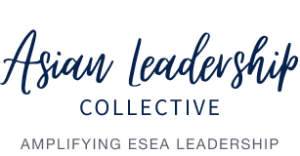In my household, the most significant December meal isn’t the traditional turkey on Christmas day, but rather an equivalent Chinese feast on Winter Solstice. In 2023, this falls on Friday 22nd December. This is when the sun travels the shortest path through the sky, resulting in the shortest day and longest night of the year in the northern hemisphere. For Chinese people, Winter Solstice is known as Dongzhi (冬至), meaning ‘Winter’s Arrival’, and it has been celebrated since the Han Dynasty (206 BC – 220AD). Dongzhi is as important as Lunar New Year, the festivities are similar as they both involve bringing the family together and catching up with relatives, with the addition of commemorating the days becoming longer. For some, Dongzhi involves worshipping heaven as it was believed that this would bring a great harvest and good health for the coming year. Whilst traditions may vary across China, the one thing we all have in common is, eating a ton of food.
In northern China, families would celebrate with dumplings and soup to help dispel the cold. The ritual is related to Zhang Zhongjing, a medical scientist, who created dumplings to treat people who suffered from ear frostbite. Whereas in southern China we eat tangyuan (湯圓), glutinous rice balls in sweet soup or broth, as the name sounds similar to ‘family reunion’ (團團圓圓). Therefore, they are a symbol of togetherness and enjoyed as a dessert.
Being a second-generation Hong Kong immigrant, I always enjoyed watching my parents prepare a massive feast for our friends and family. However, I never truly appreciated the significance. Now when I look back, I also remember the extra love and care my parents poured into preparing the meal to nourish all of us, and how happy they were to gather everyone under one roof. It is a cosy night of endless food and a true celebration of family togetherness.
Personally, in my home we fill the table with lots of vegetables and protein, these usually being:
- Steamed fish – fish sounds the same as abundance and symbolises prosperity, it goes with the saying ‘May you always have more than you need’ (年年有余)
- Lettuce – this symbolises wealth
- Baby bok choy – to symbolise good fortune
- Chinese broccoli – to symbolise harmony
- Shiitake mushrooms – traditionally these were very expensive and would only be eaten during special occasions, thus they symbolise that this meal is a big deal
So there you have it – food, family and friends, a snapshot of how the Chinese celebrate the Winter Solstice! Other East and South East Asian (ESEA) countries also commemorate this festival in their own way. Therefore, it can be lonely for those in the UK whose families are far away. This is why I’m thankful to organisations such as the Asian Leadership Collective (ALC), a social enterprise that brings people together and empowers ESEA voices. They run numerous events and initiatives throughout the year to celebrate and bring awareness to ESEA culture and storytelling through food. This last month they celebrated their 3rd anniversary of ESEA Eats, a month of food celebrations. To read more about #ESEAEats visit https://asianleadership.co.uk/eseaeats/
I can't wait to see how the ESEA community will celebrate this year. If you would like to try your hand at making your own tangyuan, the ALC have a handy recipe you can follow.
For those who celebrate - Happy Winter Solstice! Eat lots to stay warm.

